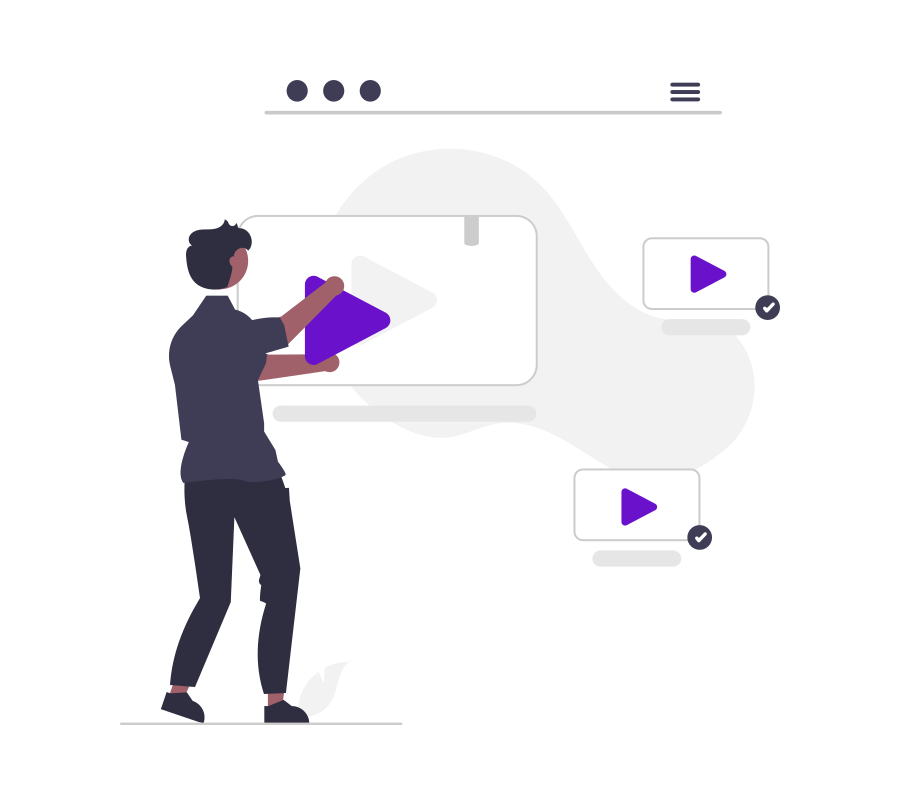Webinars have emerged as a powerful tool for B2B marketers, providing an effective platform to showcase expertise, generate leads, and build relationships with key accounts. But simply hosting a webinar isn't enough to drive meaningful results. To truly maximize the impact of your webinars, it's essential to integrate Account-Based Marketing (ABM) strategies at every stage—before, during, and after the event. This blog will walk you through a comprehensive approach to applying ABM techniques for webinar success, focusing on strategic planning, execution, and follow-up to ensure you engage your audience effectively.
The Pre-Webinar Stage: Strategic Planning for Maximum Impact
1. Align Your Webinar Content with Account Needs
Start by carefully planning your webinar content around the specific needs and pain points of your target accounts. ABM is all about personalization and relevance, so make sure your webinar topic is highly relevant to the challenges faced by your key prospects. Conduct research to understand what issues matter most to them and how your expertise can provide value.
2. Segment Your Audience for Targeted Outreach
Effective ABM relies on precise targeting. Segment your audience into distinct groups based on their industry, job role, company size, or any other relevant criteria. This segmentation will allow you to tailor your messaging and outreach efforts, making your invitations more personalized and compelling. Instead of sending generic invitations, craft messages that speak directly to the needs and interests of each segment.
3. Build a Multi-Channel Promotion Strategy
Once your target accounts are segmented, it's time to build a multi-channel promotion strategy to reach them effectively. Leverage email marketing, social media, direct mail, and even personalized phone calls to drive registrations. Each channel should convey consistent messaging, but be tailored to the format and expectations of that platform. For example, emails might provide detailed information, while social media posts focus on quick, engaging highlights.
The Webinar Stage: Engaging Your Audience in Real Time
1. Set the Stage with a Personalized Welcome
When attendees log into the webinar, the experience should feel personalized right from the start. Consider sending a personalized welcome message to each registrant, mentioning their name and thanking them for joining. This sets a positive tone and immediately establishes a personal connection.
2. Encourage Interaction with Targeted Polls and Q&A
During the webinar, use interactive elements such as polls, surveys, and Q&A sessions to engage your audience actively. Craft these interactions around the specific interests of your target accounts, asking questions that resonate with their needs and challenges. This not only keeps the audience engaged but also provides valuable insights into their current pain points and interests.
3. Deliver Content with High Relevance and Value
Ensure that the content delivered during the webinar is highly relevant to the audience. Avoid generic content and focus on providing specific insights, strategies, or solutions that address the unique needs of your target accounts. Highlight how your offerings can solve their particular problems or enhance their business outcomes. This relevance will make your content more memorable and impactful.
4. Utilize Real-Time Data to Enhance Engagement
Leverage real-time analytics to monitor attendee engagement throughout the webinar. Identify which segments of your audience are most engaged and which parts of your presentation resonate the most. Use this data to adapt your delivery on the fly, spending more time on high-interest topics and encouraging further interaction.
The Post-Webinar Stage: Follow-Up for Lasting Impact
1. Tailor Your Follow-Up Communication
Following the webinar, send personalized follow-up emails to attendees. Recap key points discussed during the webinar and provide additional resources, such as slide decks, whitepapers, or relevant blog posts. Make sure each follow-up email is tailored to reflect the specific interests and engagement level of the recipient. A personalized approach will increase the likelihood of continued engagement and conversion.
2. Segment and Score Leads Based on Engagement
Use the data collected during the webinar to segment your leads based on their engagement level and behavior. Assign lead scores based on factors such as time spent in the webinar, participation in polls or Q&A sessions, and content downloads. This scoring will help prioritize your follow-up efforts and focus on the most promising leads.
3. Offer Personalized Demos or Consultations
As part of your post-webinar strategy, offer personalized demos or consultations tailored to the specific needs discussed during the webinar. This targeted approach can help move high-potential leads further down the sales funnel by providing them with a customized experience that addresses their unique challenges and needs.
4. Continue Nurturing with Relevant Content
Keep the conversation going by sending regular, relevant content to your leads. Develop a content calendar that aligns with the interests and pain points identified during the webinar. This could include additional webinars, case studies, articles, or newsletters that provide value and keep your brand top of mind. Ensure that every piece of content you send is personalized and adds value to the recipient.
5. Analyze Results and Optimize Your Strategy
Finally, take the time to analyze the results of your webinar and follow-up efforts. Review metrics such as registration rates, attendance rates, engagement levels, and conversion rates to evaluate the effectiveness of your ABM strategy. Use these insights to refine your approach for future webinars, focusing on what worked well and making adjustments where necessary.
Conclusion: ABM is the Key to Webinar Success
By integrating ABM strategies into your webinar planning, execution, and follow-up, you can significantly enhance engagement, build stronger relationships with key accounts, and drive better business outcomes. Remember, the success of a webinar doesn't end when the broadcast does; it extends through a continuous cycle of personalized engagement and targeted follow-up. Embrace the power of ABM to turn your webinars into a powerful tool for driving growth and achieving your marketing goals.


